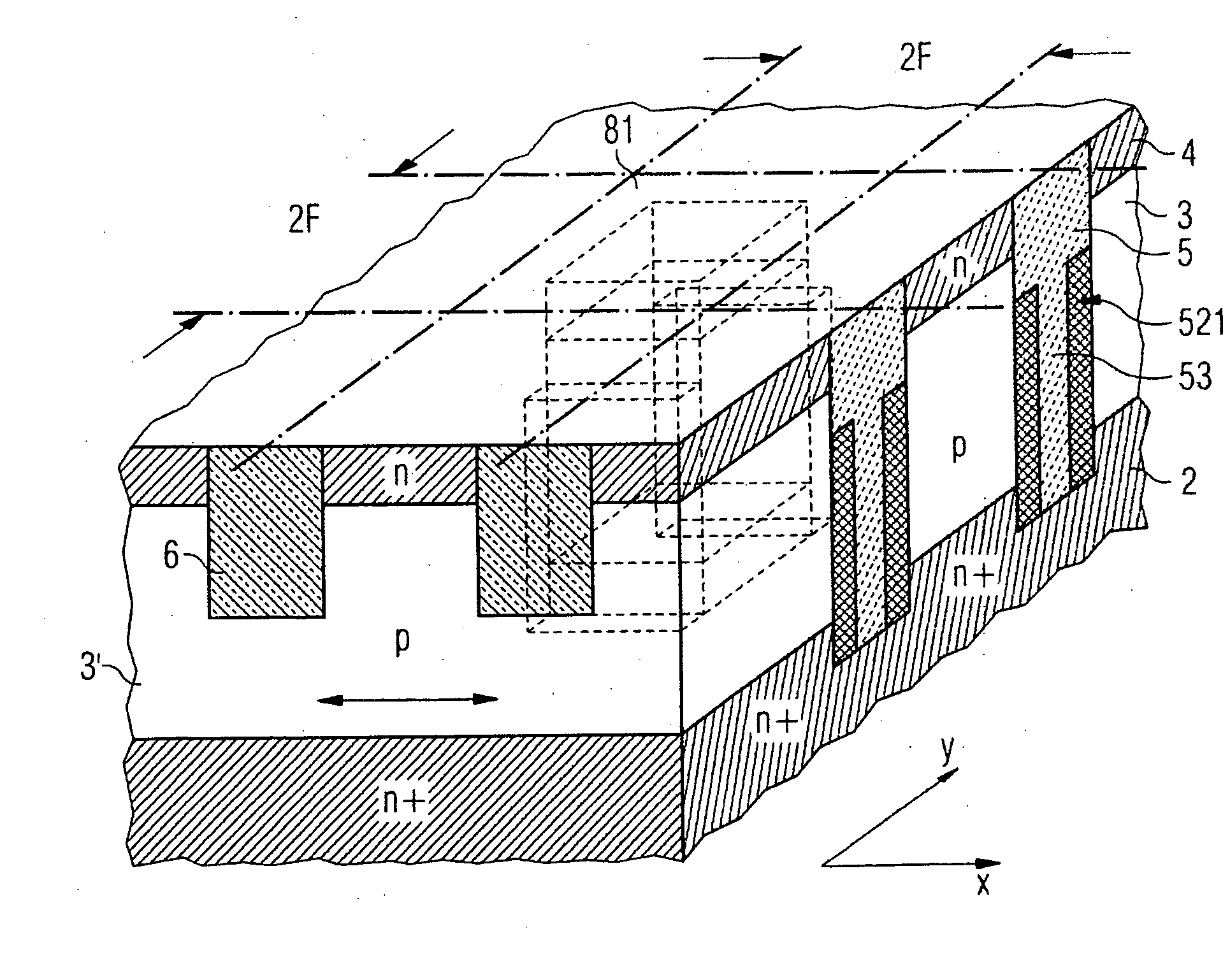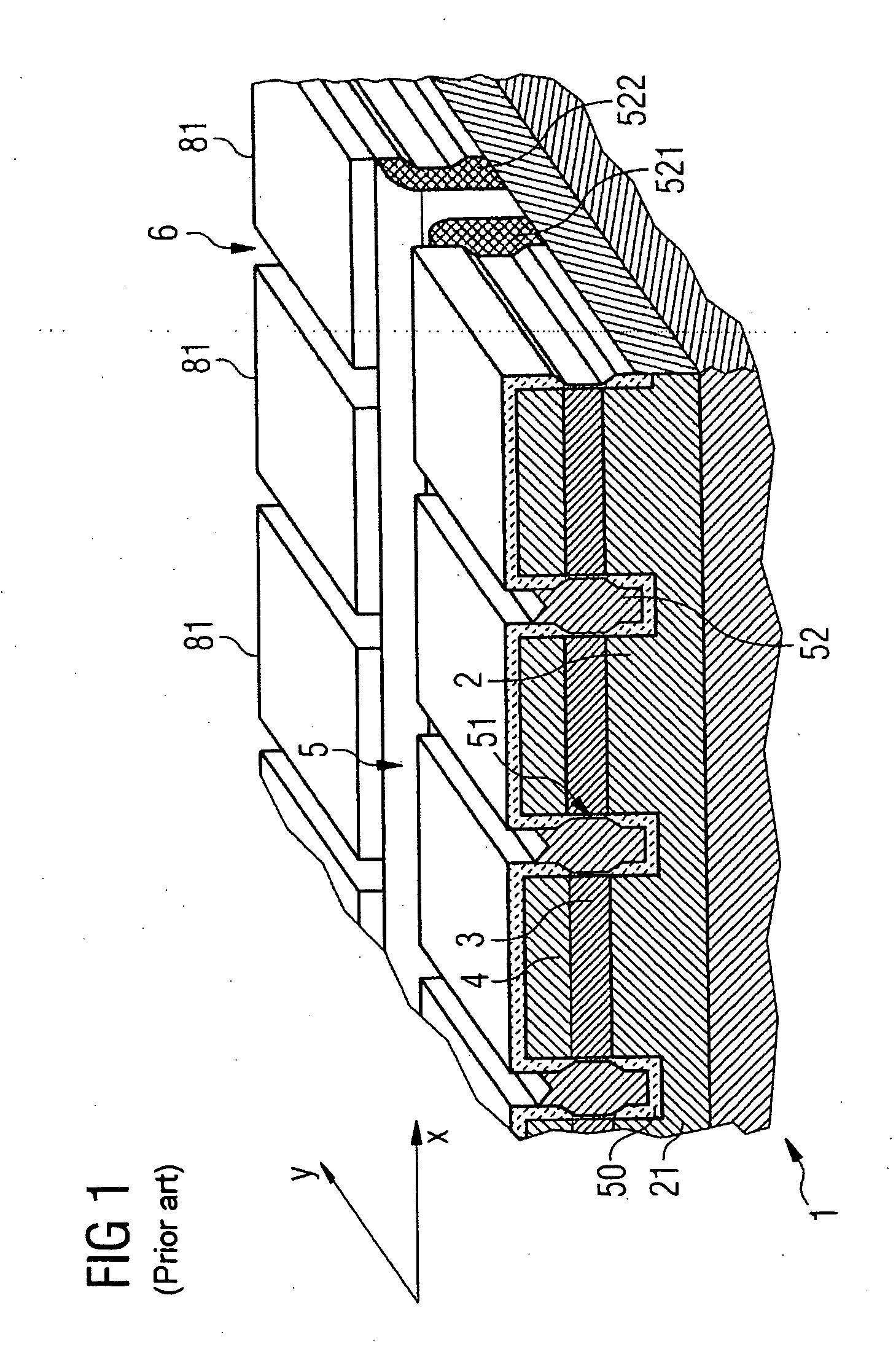Method of fabricating and architecture for vertical transistor cells and transistor-controlled memory cells
a technology of vertical transistor cells and memory cells, applied in the direction of transistors, electrical devices, semiconductor devices, etc., can solve the problems of affecting altering the electrical properties of the transistor cell, and affecting the functional restriction of the transistor cell by a floating body effect, so as to increase the area requirement and reduce the functional restriction of the transistor cell
- Summary
- Abstract
- Description
- Claims
- Application Information
AI Technical Summary
Benefits of technology
Problems solved by technology
Method used
Image
Examples
Embodiment Construction
[0035] The following list of reference symbols is used consistently in the discussion to follow.
[0036]1 Substrate
[0037]2 Lower source / drain connection region
[0038]21 Connection plate (buried layer)
[0039]3 Active region
[0040]3′ Layer body
[0041]3″ Precursor layer body
[0042]31 First epitaxial layer
[0043]32 Second epitaxial layer
[0044]33 Transistor web
[0045]4 Upper source / drain connection region
[0046]4′ Preliminary stage of the upper source / drain connection region
[0047]5 Active trench
[0048]50 Insulator layer
[0049]51 Gate dielectric
[0050]52 Gate electrode
[0051]521, 522 Word line
[0052]53 Word line insulator (inter wordline fill)
[0053]6 Isolation trench
[0054]71 Process layer
[0055]81 Transistor cell (selection transistor)
[0056]82 Storage capacitor
[0057]91 Working layer
[0058]92 Mask
[0059] FIGS. 2 to 7 illustrate the fabrication of a transistor cell architecture according to a first exemplary embodiment of the present invention at various steps, using cross sections an...
PUM
 Login to View More
Login to View More Abstract
Description
Claims
Application Information
 Login to View More
Login to View More - R&D
- Intellectual Property
- Life Sciences
- Materials
- Tech Scout
- Unparalleled Data Quality
- Higher Quality Content
- 60% Fewer Hallucinations
Browse by: Latest US Patents, China's latest patents, Technical Efficacy Thesaurus, Application Domain, Technology Topic, Popular Technical Reports.
© 2025 PatSnap. All rights reserved.Legal|Privacy policy|Modern Slavery Act Transparency Statement|Sitemap|About US| Contact US: help@patsnap.com



